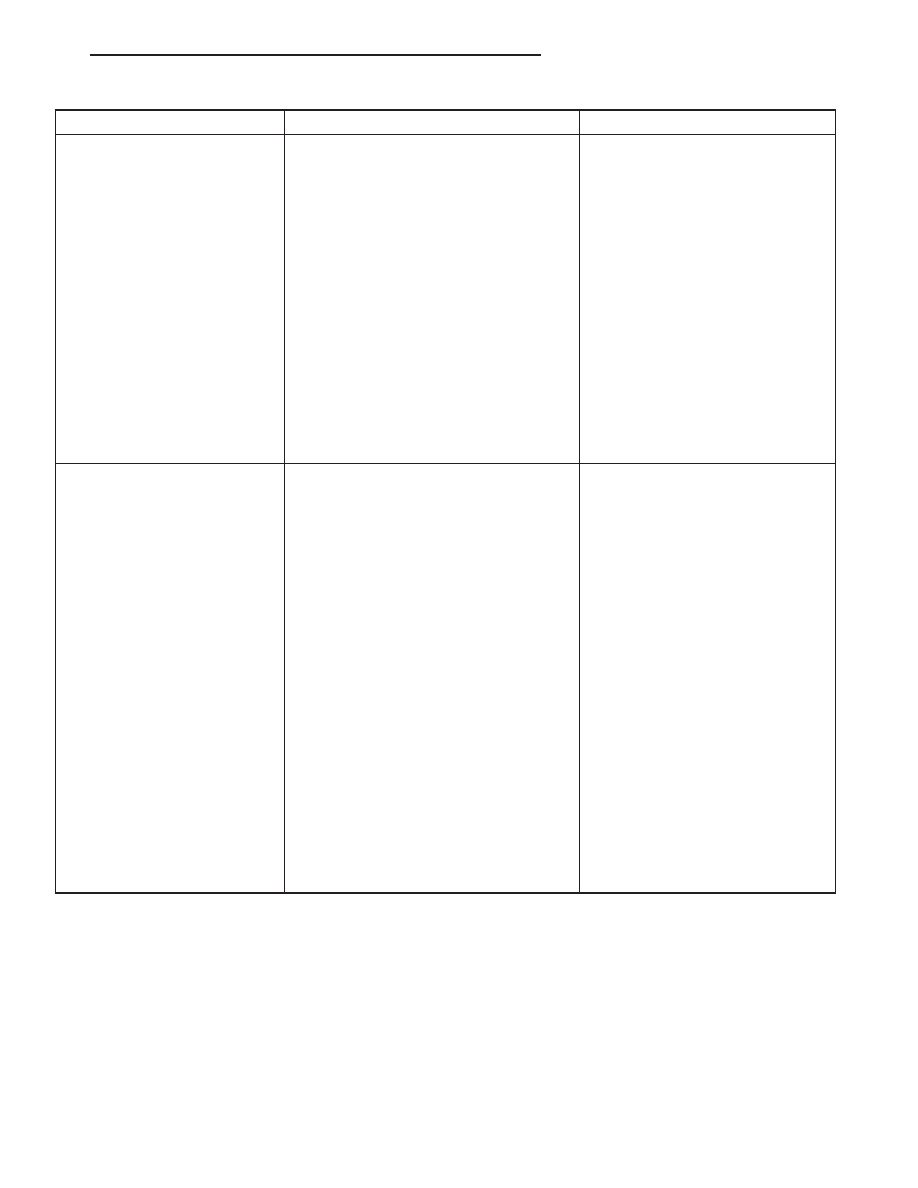Content .. 1076 1077 1078 1079 ..
Chrysler Town, Dodge Caravan. Manual - part 1078

CONDITION
POSSIBLE CAUSES
CORRECTION
INADEQUATE AIR
CONDITIONER
PERFORMANCE
(COOLING SYSTEM
SUSPECTED)
1. Radiator and/or A/C condenser is
restricted, obstructed or dirty
(insects, leaves, etc.)
1. Remove restriction or clean
debris from radiator or A/C
condenser.
2. Engine is overheating (heat may
be transferred from radiator to A/C
condenser. High Under hood
temperatures due to engine
overheating may also transfer heat
to A/C condenser).
2. Correct overheating
condition.
3. The cooling system is equipped
with air seals at the radiator and/or
A/C condenser. If these seals are
missing or damaged, not enough air
flow will be pulled through the
radiator and A/C condenser.
3. Check for missing or
damaged air seals. Repair as
necessary.
INADEQUATE HEATER
PERFORMANCE. MAY BE
ACCOMPANIED BY LOW
GAUGE READING
1. Diesel engines, due to their
inherent efficiency are slower to
warm up than gasoline powered
engines, and will operate at lower
temperatures when the vehicle is
unloaded.
1. The lower gauge reading
may be normal.
2. Coolant level low.
2. Pressure test cooling system.
Repair leaks as necessary.
3. Obstruction in heater hose fitting
at engine.
3. Remove heater hoses and
check for obstructions. Repair
as necessary.
4. Heater hose kinked.
4. Locate kinked area. Repair
as necessary.
5. Water pump is not pumping water
to heater core. When the engine is
fully warmed up, both heater hoses
should be hot to the touch. If only
one of the hoses is hot the water
pump may not be operating correctly.
The accessory drive belt may also
be slipping causing poor water pump
operation.
5. Refer to water pumps in this
group. Repair as necessary. If a
slipping belt is detected, refer to
Engine Accessory Drive Belts in
this group. Repair as
necessary.
RG
COOLING 2.5L TURBO DIESEL
7 - 5
COOLING 2.5L TURBO DIESEL (Continued)